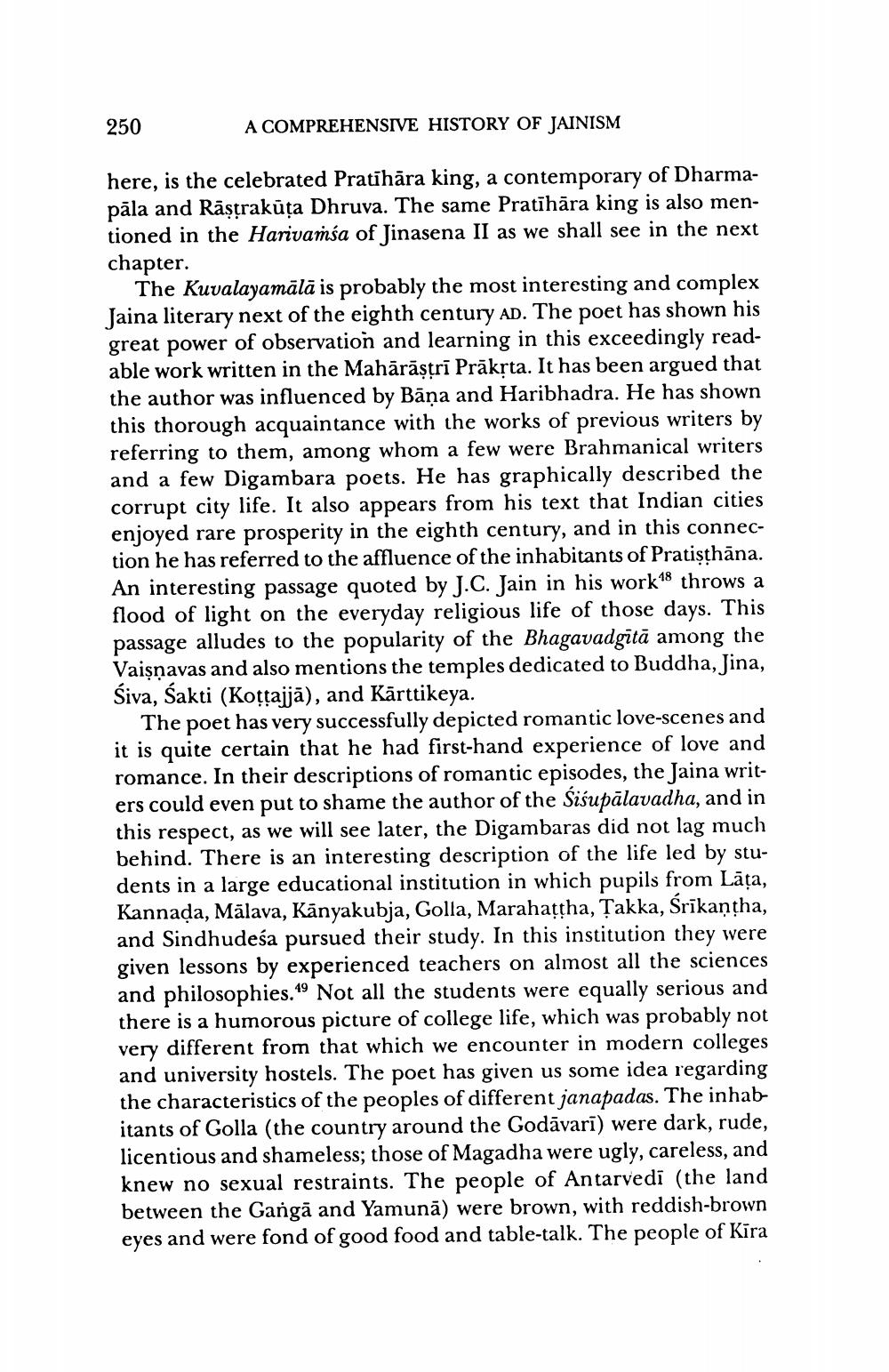________________
250
A COMPREHENSIVE HISTORY OF JAINISM
here, is the celebrated Pratīhāra king, a contemporary of Dharmapāla and Rastrakūta Dhruva. The same Pratihāra king is also mentioned in the Harivamsa of Jinasena II as we shall see in the next chapter.
The Kuvalayamālā is probably the most interesting and complex Jaina literary next of the eighth century AD. The poet has shown his great power of observation and learning in this exceedingly readable work written in the Mahārāștri Prākrta. It has been argued that the author was influenced by Bāņa and Haribhadra. He has shown this thorough acquaintance with the works of previous writers by referring to them, among whom a few were Brahmanical writers and a few Digambara poets. He has graphically described the corrupt city life. It also appears from his text that Indian cities enjoyed rare prosperity in the eighth century, and in this connection he has referred to the affluence of the inhabitants of Pratisthāna. An interesting passage quoted by J.C. Jain in his work18 throws a flood of light on the everyday religious life of those days. This passage alludes to the popularity of the Bhagavadgitā among the Vaisnavas and also mentions the temples dedicated to Buddha, Jina, Śiva, Śakti (Kottajjā), and Kārttikeya.
The poet has very successfully depicted romantic love-scenes and it is quite certain that he had first-hand experience of love and romance. In their descriptions of romantic episodes, the Jaina writers could even put to shame the author of the Sišupālavadha, and in this respect, as we will see later, the Digambaras did not lag much behind. There is an interesting description of the life led by students in a large educational institution in which pupils from Lāța, Kannada, Mälava, Kanyakubja, Golla, Marahattha, Takka, Srikantha, and Sindhudeśa pursued their study. In this institution they were given lessons by experienced teachers on almost all the sciences and philosophies. 49 Not all the students were equally serious and there is a humorous picture of college life, which was probably not very different from that which we encounter in modern colleges and university hostels. The poet has given us some idea regarding the characteristics of the peoples of different janapadas. The inhabitants of Golla (the country around the Godāvari) were dark, rude, licentious and shameless; those of Magadha were ugly, careless, and knew no sexual restraints. The people of Antarvedi (the land between the Gangā and Yamunā) were brown, with reddish-brown eyes and were fond of good food and table-talk. The people of Kira




